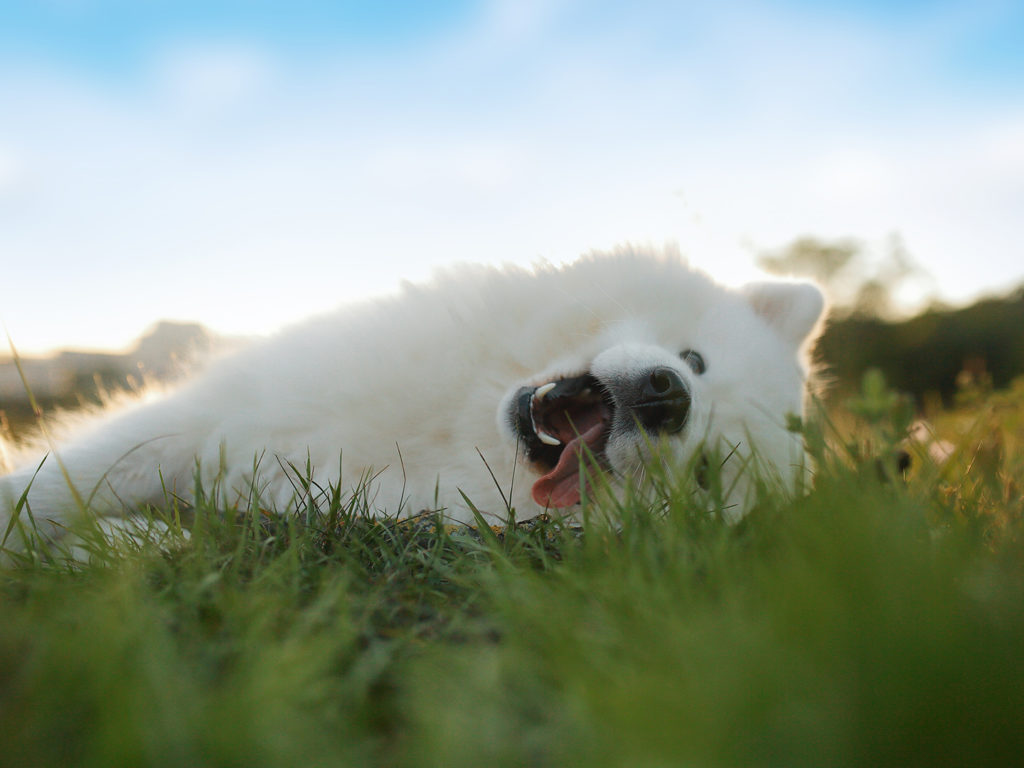Time For A Summer Cut? Tips For Warm Weather Dog Grooming

While people tend to dress differently depending on the season, most pets “wear” the same coat year-round. Shaving off this hair during the hot summer months may seem like a good idea to keep a dog cool, but it can actually have the opposite effect for some animals.
Dr. Ashley Navarrette, a clinical assistant professor at the Texas A&M College of Veterinary Medicine & Biomedical Sciences, discusses summer grooming and other techniques for helping pets beat the heat.
“While some pets may benefit from a thorough grooming, fully shaving a dog is not usually necessary unless there is matting involved,” Navarrette said. “Trimming may be useful in long-haired breeds to make the hair more manageable, but this should be done by a professional to avoid injury.”
For dogs, the type of grooming required in summer depends on the breed and type of coat. An important distinction is that some dogs have hair, which grows continually as a single layer, while others have a specific type of hair called fur, which grows in two layers to a specific length.
“There are some breeds that require frequent grooming (for example, poodles), which may involve shaving coats down to less than 1 inch in length; however, these breeds tend to have hair rather than fur,” Navarrette said.
During the summer, owners may be tempted to shave dogs with thick double coats, like Siberian Huskies, Labradors, Australian Shepherds, and Pomeranians, but this thick fur is actually beneficial in warm weather. It serves as natural insulation to help dogs thermoregulate by creating a barrier of cool air within the coat.
“We often see issues with shaving these breeds, as the undercoat may grow back first and interfere with the growth of the guard hairs, or the main part of the coat we see,” Navarrette said. “This can result in an altered coat after it grows back.”
In addition to cosmetic concerns, shaving a dog’s fur may make it less tolerant of high temperatures because of the loss of natural insulation.
Rather than shaving dogs with thick fur, Navarrette recommends frequent brushing to remove excess hair.
“Brushing is 100% recommended, as many of these breeds will naturally thin the undercoat portion of their coats during warmer months,” she said. “If this hair is not physically removed via brushing, combing, or blowing out, the coat may not be serving its true purpose of keeping the pet cool.”
While grooming can certainly play a factor in keeping dogs cool, there are many other ways to make sure pets stay comfortable this summer.
“Whenever possible, I recommend that pets should be kept in an air-conditioned environment,” Navarrette said. “I can appreciate that some dogs spend the majority of their time outdoors, and in these cases, shaded areas can provide the feeling of being 10-15 degrees cooler and should be readily available.”
Whether inside or outside, pets should always have access to cool, clean water. Products like cooling mats can also help provide relief from the heat.
“Walking of dogs should be done early in the morning or in the late evening to avoid the hottest times of the day,” Navarrette said. “While temperature is one factor in keeping pets safe, it’s also important to take into account humidity, the temperature of the asphalt/concrete, the pet’s age and conformation (for example, short-faced breeds are more prone to heat stroke), and health status.”
Keeping all of these factors in mind is a great way to make sure your pet has a fun and safe summer. And before pulling out the trimmers or heading to a pet salon, consider whether your dog’s coat is helping or hindering its ability to stay cool.
Pet Talk is a service of the College of Veterinary Medicine & Biomedical Sciences, Texas A&M University. Stories can be viewed on the web at vetmed.tamu.edu/news/pet-talk. Suggestions for future topics may be directed to editor@cvm.tamu.edu.


